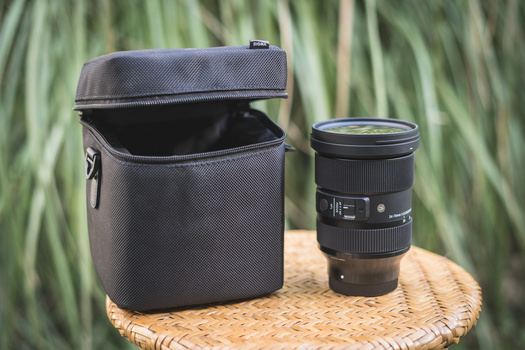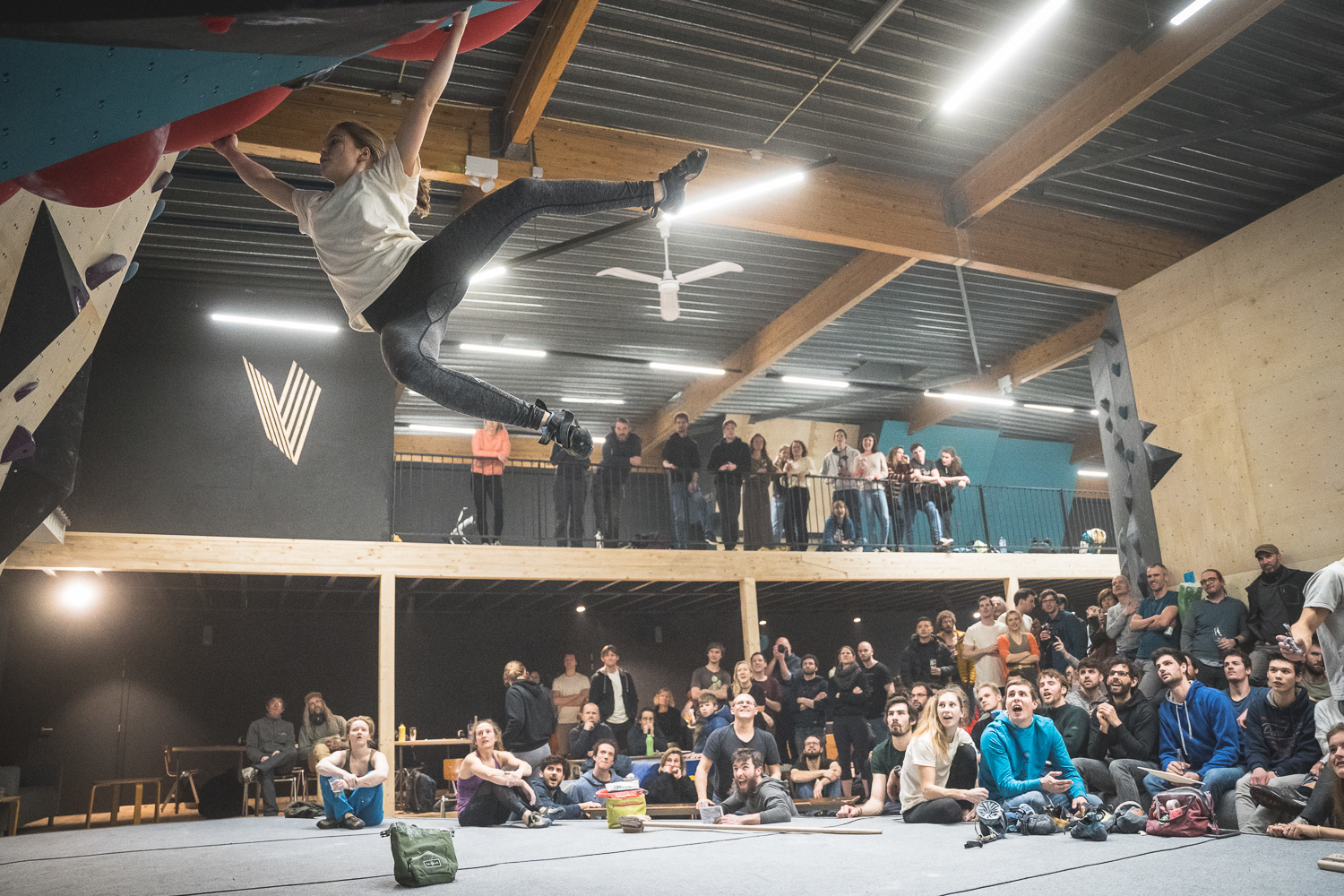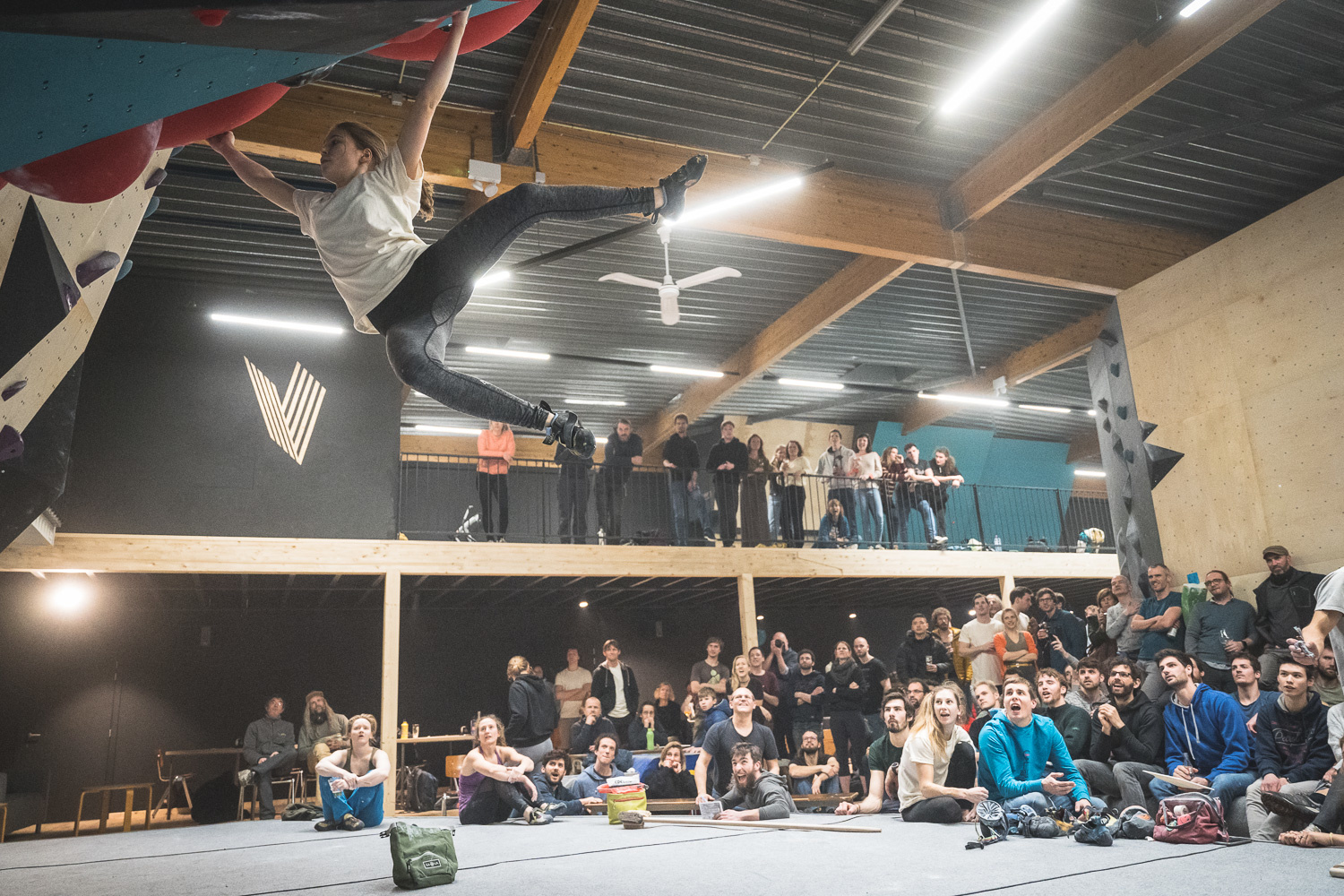Until last year, f/2.8 standard zooms for Sony mirrorless cameras were limited to Sony’s hefty GM, an impressive lens with a price tag to match. Suddenly, there’s a trio from which to choose, and the Sigma 24-70mm f/2.8 DG DN Art is a welcome addition to the fray.
Sigma France kindly gave me a month to the put their new lens to the test. I’ll touch on technical aspects such as corner sharpness and distortion, but this was an opportunity to try a lens in the field and get a sense of whether this is a piece of gear that I genuinely want to add to my bag. If you want to pixel-peep, seek out the MTF charts and endless photos of walls at different apertures elsewhere. If you want to know what it felt like to use this lens for a month, whether it inspired me to go out and shoot photographs, and whether it is the workhorse that it claims to be, read on.
At half the price of the Sony ($1,100 instead of $2,200), you’d expect to get a lot less lens, and it’s slightly smaller and lighter, though without the compromised focal length of the plucky and much-lauded Tamron 28-75mm f/2.8. Here are the specs, with the Sony GM's stats in brackets to give you a comparison:
- Angle of View: 84.1° to 34.3° (84° to 34°)
- Minimum Focus Distance: 7.09” / 18 cm (15” / 38 cm)
- Maximum Magnification: 0.34x (0.24x)
- Optical Design: 19 Elements in 15 Groups (18 Elements in 13 Groups)
- Diaphragm Blades: 11, rounded (9, rounded)
- Image Stabilization: No (No)
- Filter Size, Front: 82 mm (82 mm)
- Diameter: 3.46" / 87.8 mm (3.45" / 87.6 mm)
- Length: 4.84" / 122.9 mm (5.35" / 136 mm)
- Weight: 1.84 lb / 835 g (1.95 lb / 886 g)
There are a couple of notable figures: firstly, the minimum focusing distance of 7.09" (18 cm) is remarkable, putting both of its competitors to shame. Secondly, it’s about half an inch shorter and more than five percent lighter than the Sony. While these aren’t dramatic savings, this is the type of lens that spends a huge amount of time attached to many photographers’ cameras, so those small differences may add up.
This is still a meaty piece of glass, however. It’s notably heavier than the Tamron (1.21 lb / 550 g), and while it's similar in length, the girth is where it brings its chunk.
As the spine of the trinity of fast zooms, the 24-70mm f/2.8 is a lens where you expect to spend a good amount of cash. Having once bought a cheaper alternative in the past, I know first-hand that this is not a piece of gear where you can cut corners. The Tamron 28-75mm has shifted that perception slightly, and the Sigma seeks to do the same, bringing the manufacturer’s reputation for sharpness to the line-up of Sony glass, and hopefully none of its autofocus issues that have occasionally dogged it in the past.
With its metal construction, the build quality, like all Art glass from Sigma, is tank-like, though not oppressively so. I have large hands, and while it wouldn’t be ideal, the thought of having to use this for an entire day without the Meike grip on my a7 III would not be too daunting.
The hood snaps into place rather satisfyingly, released with its own button, and the lens keeps the AF switch and customizable button found on the Sony that Tamron decided to discard. I’d prefer a more substantial lens cap, as this was a little fiddly to replace and felt like it could be knocked off quite easily. The generously padded travel pouch that comes in the box is a nice touch.
Sharpness is superb, with impressive performance at all apertures and across the frame. As you’d expect, f/4 is sharper than f/2.8, and f/5.6 is sharper still. Autofocus is excellent, snapping to subjects rapidly and in near silence, coping well with low-light, low-contrast, and back-lit conditions.
The lens accompanied me on various days of climbing here in the Fontainebleau Forest in France and then for 10 days in the Swiss mountains. I generally prefer lightweight primes, as I’m often carrying a crash pad, climbing gear, and a day’s worth of food, so the Sigma felt like something of a lump. Obviously, the trade-off is its versatility, but the Sigma feels a little more than that: with the quality of its bokeh, this doesn't feel too far from having three or four primes in your bag.
Along with the autofocus speed and sharpness, the bokeh was one of the most pleasing aspects of the lens. f/2.8 is never going to give you incredible subject separation, but the smoothness of the out-of-focus areas of the image is sumptuous for a zoom lens. A 24-70mm can sometimes feel like one of the most mundane, functional lenses ever created, but somehow, there’s a sense that the Sigma is slightly more than that — perhaps something to do with the 11 aperture blades over the nine found in the Sony and the Tamron.
The tiny minimum focusing distance really lends to this feeling, and someone should send me contact details for Neil deGrasse Tyson, as I fear that Sigma may have tweaked the laws of physics in order to achieve this.
So, Where's the Catch?
Flaring seems to be well-controlled. There were moments where it seemed quite pronounced, but this was under very specific circumstances. Chromatic aberration wasn’t much of an issue either.

Inevitably, there have to be some drawbacks, and this is probably where pesky science gets its revenge. In designing this lens, Sigma inevitably wanted to differentiate it slightly from the Sony version in terms of size and weight. It's half an inch shorter than the Sony, but notably, with the same front filter thread, and I suspect that this is where some compromises have crept in: the Sigma packs more elements in more groups into a smaller amount of space, and there are consequences.
I’m not one to worry too much about vignetting, as it’s an effect that I like (perhaps too much), and when it’s undesirable, it’s easily eliminated in post. As a result, I’ve not felt it while shooting with the Sigma, but some might, and if you’re someone who squints at corners while wringing your hands over light loss, you may wish to invest in the Sony.
Similarly, for those who find distortion an issue, distortion will be an issue. This has slightly more serious implications than the vignetting, as correcting in post means doing some squeezing and slicing. Of the three types of distortion, moustache is the worst, and the Sigma has a snot mop that's in need of a razor. Of course, both the profile built into the lens itself and the one available in Lightroom eliminates the distortion, though at the expense of a small crop to each vertical edge.
The lens profile easily corrects the distortion, but it will also shave a tiny amount of the image off the left and right edges.How Wide Do You Want It?
The Sigma’s trip to Switzerland was a joy. I’d been pondering whether the Tamron 28-75mm would suit me, but as I discovered when shooting the image below, I need the width. You can read the full article about how this photograph came about (along with other photos from the trip, all shot on the Sigma), but I’m now certain that losing 4mm at the widest end is definitely not something that I could contemplate. Sitting on a rock in a river meant that I couldn’t back up, and even though this ended up being shot at 27mm, many of my other shots were wider, and the 28mm of the Tamron would have left me frustrated.

Zofia Reych bouldering in Brione, Switzerland.
This felt like a lens at which you can throw anything and create something beautiful, and the versatility and quality for this price makes it feel like a bargain. I’m not quite sure how it’s possible, but it makes the Sony and the Tamron both seem overpriced. This is a sharp, sturdy f/2.8 zoom with fast, silent autofocus. In short, the $220 over the Tamron buys you build, bulk, buttons, a wider focal length, and beautiful bokeh, while springing the extra $1,100 for the Sony will buy you brighter corners and less distortion.
My one small concern was the weather-sealing. I shot a competition at a Blackbox Boulder, a shiny new climbing gym in Kortrijk, Belgium. After a day photographing in a room filled with a lot of chalk dust, the Sigma had a few particles trapped behind its front element, though none of them were visible when shooting. One of the perils of a zoom lens (unless it has internal zoom) is its tendency to suck dirt inside itself thanks to the movement as you zoom in and out. The Sigma has weather-sealing, but it seems that it wasn’t enough to stop a few particles of chalk from getting inside. It's hard to say how other lenses would fare in these conditions.
Dust aside, the Sigma fared well in tough shooting conditions: poor light and moving subjects would have challenged many lesser lenses, and again, the 24mm over the Tamron's 28mm was appreciated.
In Conclusion
This is a reasonably priced brick that makes you want to take it with you everywhere, despite its size. Bokeh is surprisingly good for a 24-70mm, and the sharpness and autofocus performance is everything that you’d want from a workhorse that sits at the center of your trinity. If vignetting and distortion aren’t going to keep you awake at night, there seem few reasons to opt for the Sony version, though the weather-sealing may be a concern if you shoot regularly in dusty or damp locations.
Until Sigma stepped up, Tamron was filling a rather large gap, albeit with the compromised focal range. For some, this was too much to contemplate, and now it's no longer a decision to sweat over. The Sigma is a sturdy beast that gives excellent results and it's a lens that I plan to add to my arsenal.
What I Liked
- Sharp
- Excellent bokeh
- Fast, silent autofocus
What I Didn’t Like
- Vignetting and distortion are not ideal, though fixable in post
- Big and heavy (though still not as big as the Sony)
- Weather-sealing may fall short
You can purchase yours here.
If you're passionate about taking your photography to the next level but aren't sure where to dive in, check out the Well-Rounded Photographer tutorial where you can learn eight different genres of photography in one place. If you purchase it now, or any of our other tutorials, you can save a 15% by using "ARTICLE" at checkout.

















































Still pondering between this lens and the Tamron. It's been a while since I had a zoom lens in my kit. I am wondering if the 4mm make a huge difference and how is the AF performance between the two.
It would have been nice to compare the two side by side and I think more comparisons will appear very soon. My only point of reference is my Tamron 17-28 and I'd say they're pretty similar.
Absolutely great write up! This lens is on my radar but the weather seeling is a bit concerning for me. I'm in the Pacific northwest and it's damp up here. I've yet to really go out and shoot much but if I buy another zoom I would want the confidence to just grab and go. The images are stunning! Thanks!
Thanks Saleem - kind words. 😊 Good luck with your decision!
I haven't run this lens through its paces yet but I'm enjoying seeing what it can do. I wouldn't go as far as saying it inspires me to take more photos. I don't feel that way about tools. I am however interested in what it allows me to do that I couldn't before. I needed to fill a gap between 35-100mm.
In anticipation after I pre ordered this lens in Dec I've watched pretty much every review I could find. Most say the same thing, It's got some venetting, which is true. Some have said it has slightly slower AF than the Tamron. I haven't tried that lens so I can't say. It's seem to be on par with my other Sony lenses though. My only gripe was the lens caps, it's super cheap and it bows out. This may introduce some dust. I emailed Sigma, got a replacement quickly but that one isn't better either. I believe it's a design flaw. I threw my Sony 82mm cap and it fit really good. I might just get another one of those. I'm not going to complain beyond that.
I won't say buy this over the Tamron. Both seem great. I personally like the barrel lock, programmable button and build quality. That was worth the extra $200 for me.
Thanks for your thoughts, Jerome. It's a tough one for me because I would benefit massively from the weight-saving offered by the Tamron. Just can't do it, though.
Glad it's not just me with the lens cap!
Very useful article. Truly.
Here's another thought: where portability is key, especially for lanscapes and staying within the Sony ecosystem, what about Sony's excellent APSC 16-55 f2.8 attached to a a6x00? It's an outstanding performer, cheaper, smaller than the Sigma. Yes, i know it's a smaller sensor. It's an option.
Glad to know it's of use! 😊
Yep, appreciate the suggestion - it would definitely save me some weight and money! I've pondered moving to APS-C but the options for a fast autofocus wide-angle zoom are quite limited. There's the 10-18mm but it's f/4 and it's not unusual for me to shoot action in low light. For the climbing competition, I swapped out briefly to my Tamron 17-28mm f/2.8 (which I use a lot) to give me a bit of variety while shooting the finals (5 climbers climbing the same four climbs for four minutes at a time) and not having f/2.8 would have meant some super high ISOs.
And I should add - it's a shame cos I've heard some really good things about that 16-55!
I had this lens for about a month. It is my only autofocus lens i own as everything else is leica. I love the way this lens renders and the punch it gives to people. I favour this lens for people over landscapes because it is almost too well corrected and does suffer lens flare worse than my leica lens. It also lacks the ability to stop down and get a beautiful crisp starburst off of lights. I know this is personal preference but i love the look of the starburst on lights. This rocks at people pictures though. I am shooting with it on a lumix s1.